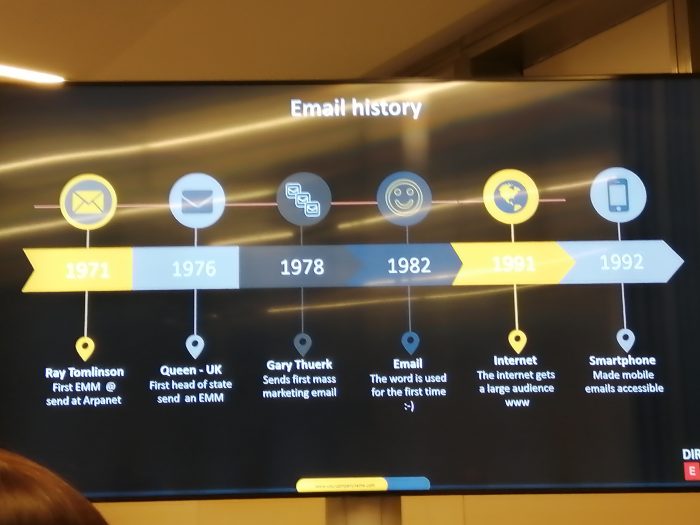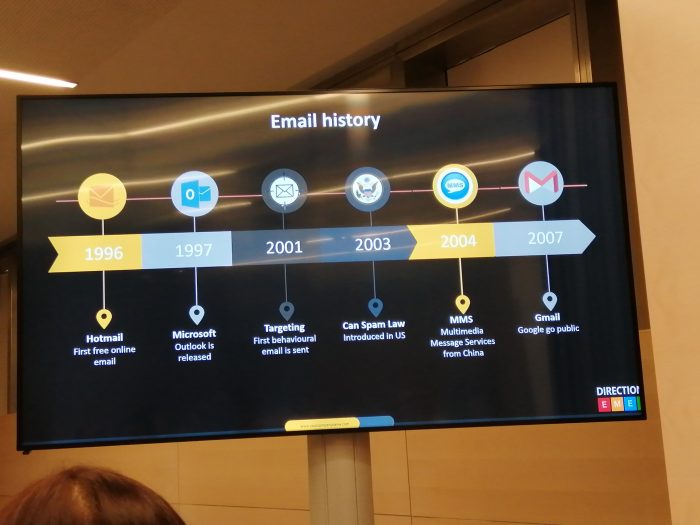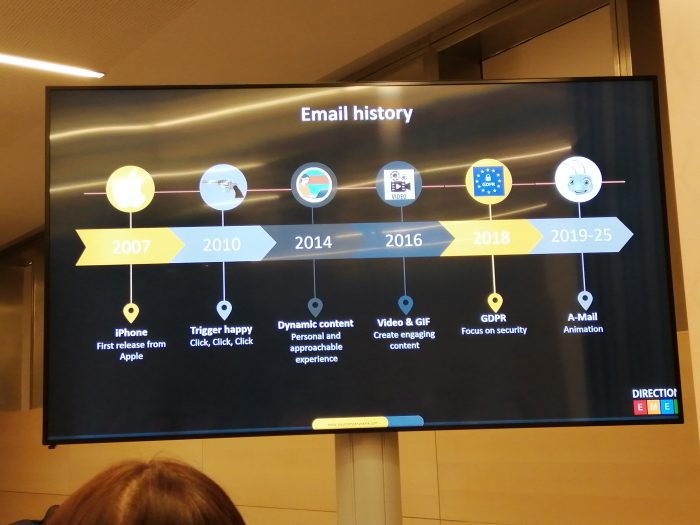The TVision team are in attendance as every year at Directions EMEA. With six people attending this year, we are still not able to always cover all of the interesting and insightful sessions. The main objectives for the team when we come here, are to pick up as much information as possible around any new Business Central developments which we can then feed back to the rest of the team, and then inform our clients and prospects. As always, my take is a marketing focus whereas other colleagues attend sales, dev or consultancy streams.
Microsoft keynote
The Microsoft keynote sessions never fail to deliver and we always pick up some great stats, tips and insider knowledge with humour and a demo or two along the way. Did you know that 91% of Fortune 500 companies use Dynamics 365 or the Power Platform? That’s a lot of companies that are putting their faith into a global company that has an AI first approach to its product software. With stability, performance, supportability and security as key drivers for product development, Business Central is a fast growing software solution for companies that are looking for a comprehensive business management solution. But then with the Microsoft stack, more and more business processes and workflows are soon added to client requirements.
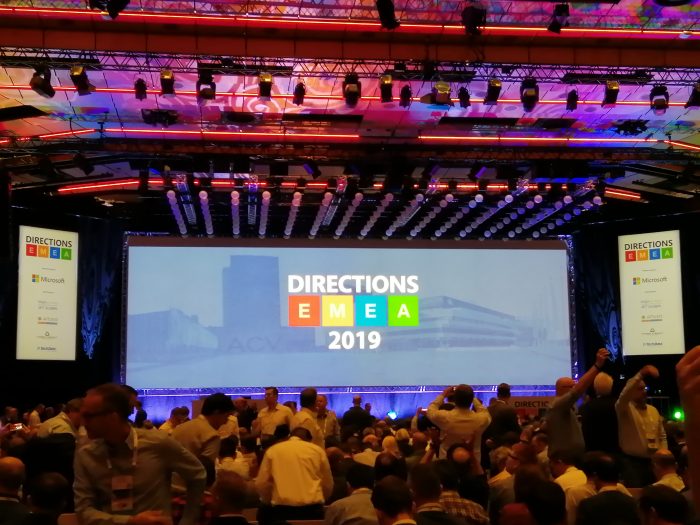
Amusing quote of the morning for me was the two life lessons that Jannik Bausager told us that he’d passed on to his son: “Firstly you must learn programing – it’s the future (which you’d expect coming from a Microsoft product evangelist); and secondly – never throw plastic in the ocean (which should be true for all of us, right?!).”
Microsoft encourage users to submit their ideas. Last year at the Directions 2018 EMEA at the Hague Jannick promised that he’d deliver the top 10 voted on ideas for Business Central. Did he manage it? Well, he delivered 9 of the top 10, but actually about 100 across the whole year. I’d say that’s a pretty good indicator that users can influence a product to make UX so much better.
Marketing & Sales Engine for D365 partners
Next up was a session delivered by the larger than life Guus Krabbenborg. In his own inimitable style he gave the audience his usual no nonsense wake-up call on the need for a fully functioning marketing and sales engine in every organisation. After last year’s event he spoke with a number of senior Microsoft execs and crystallised the positioning of Dynamics 365 into three simple truths as to why businesses should adopt it:
- Allows the connection of all business sub-systems
- Supports better decision making
- Enables the start-up and growth of a business
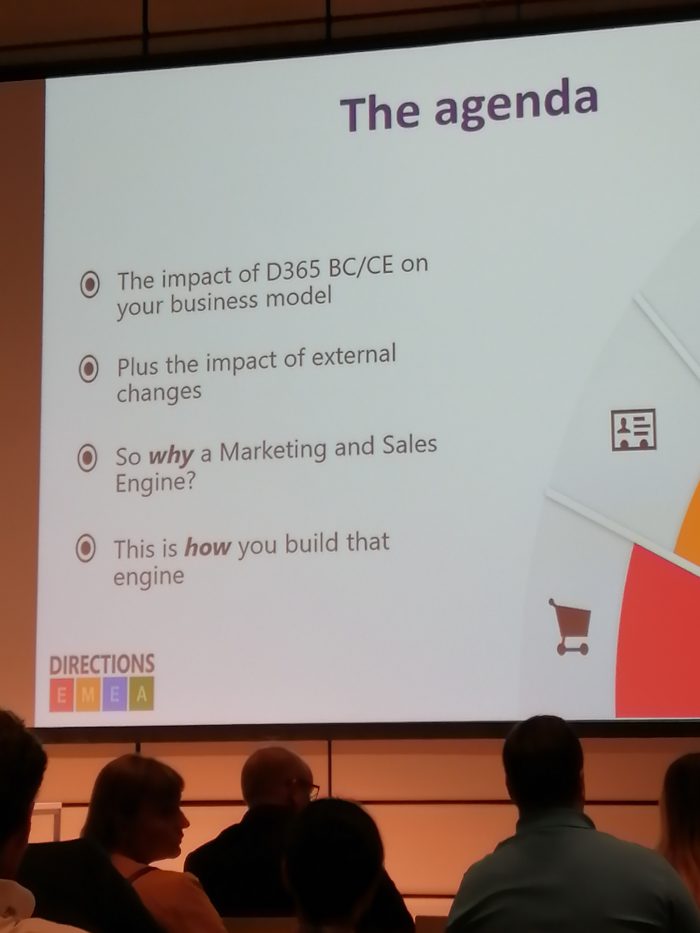
Send emails your customers can’t ignore – the marketing focus
This was in relation to an email add-in you can use which incorporates Microsoft Flow. For me, the highlight was the email timeline that was shared. We were told that the first ever email sent were the words: “Test 1 2 3”?
He then asked whether people were doing internal analysis around average on premise vs cloud deal size, customer churn rates and therefore profitability. He also got everyone thinking about whether they had a documented “sales and marketing methodology”?
Sales Psychology x3 with a marketing focus too
To round off the day, I then attended three sessions back-to-back delivered by the brilliant Sharka Chobot, managing to get a front row seats each time:
- Charge what you want, understanding cloud value and pricing
- Help! My IT messaging isn’t working
- Marketing is the new sales: 10 critical marketing strategies
Sharka is a highly experienced Microsoft consultant with a background in IT spanning several decades. What she doesn’t know about the psychology of selling, basically isn’t worth knowing. My colleagues always joke about how much I admire her, but she really knows her stuff and completely understands the value of effective marketing. Whilst I had seen some of the content before when she came to the TVision office to deliver a tailored workshop to the team – there is always more and to learn, and I got reminders of things I could still do to achieve more. I was delighted to see several TVision website screenshots included in her presentation as best practice examples of what you should be doing to deliver a compelling sales message to prospects. We had a website upgrade project recently, and her feedback was instrumental to making some final changes – and improvements – to the site you are visiting today.
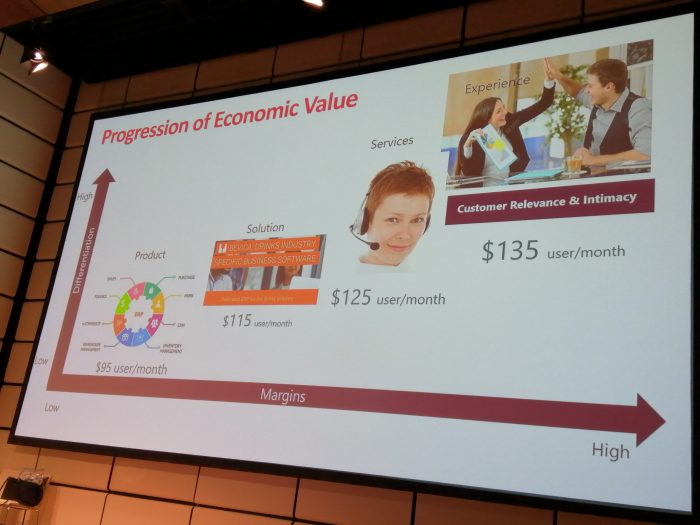
Talking about the link between price, value and benefits started off the sessions. She gave an example of why people choose something new, i.e. ERP software, because it either saves us money, saves us time, makes life easier or more convenient, means we can do something better or of a higher quality. None of those factors are the features of a product, they are all the benefits. Yet as marketers we often just list all the features when most products are broadly the same. What differentiates us from another vendor? From a TVision point of view it has to be our expertise. Particularly for the drinks sector. We have significant knowledge and expertise when it comes to the wine sector with our Bevica drinks industry solution for example.
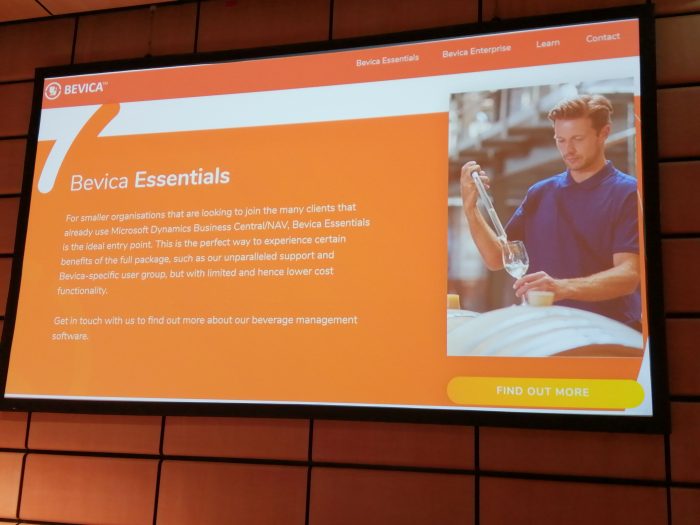
In the next session Sharka spoke of some research carried out on the top 50 ERP companies in the USA. They did some analysis of the imagery used online. 81% of the pictures were non-human, that is to say the images were of coffee cups, screens or icons. But no people. Sharka explained that it’s human nature to be drawn to aces, so why not use them on your websites when you want people to feel a connection to you, or for you as a vendor to show that you understand the problem a prospect is having by using appropriate facial expressions in your website pictures, i.e. stress beforehand and calm after the implementation of a new solution. She also spoke about persona content that every website should have, i.e. making sure you have shorter thought leadership type pieces for the CEO, longer case studies and whitepapers for Business/Functional leaders. She then laughed and said it’s unlikely that anyone would need to create any content for an IT Manager – as most websites had nothing but product focussed content on them.
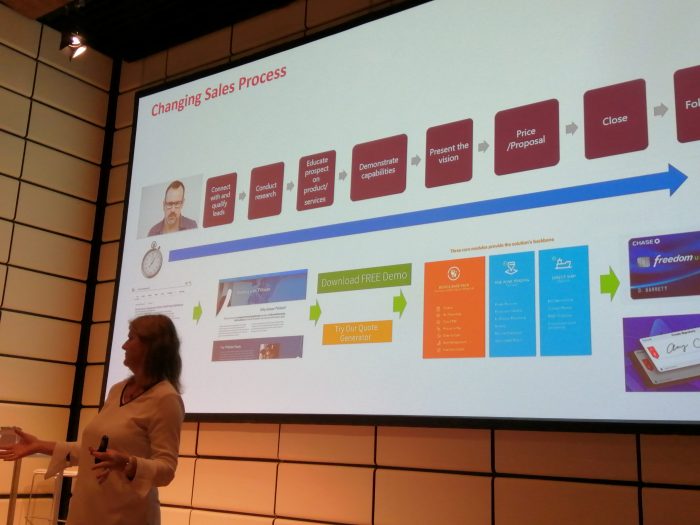
The final session of day one started off with a voice only delivery from Sharka. The AV equipment failed her and she has no laptop or notes to speak from. However, as it was a subject she knew really well this didn’t stop her and she carried on regardless and introduced the subject. I loved her turn of phrase around “minimum loveable product” rather than minimum viable product, she’s definitely got a point.
And that was the end of a busy day one. Day two blog/s to follow.

